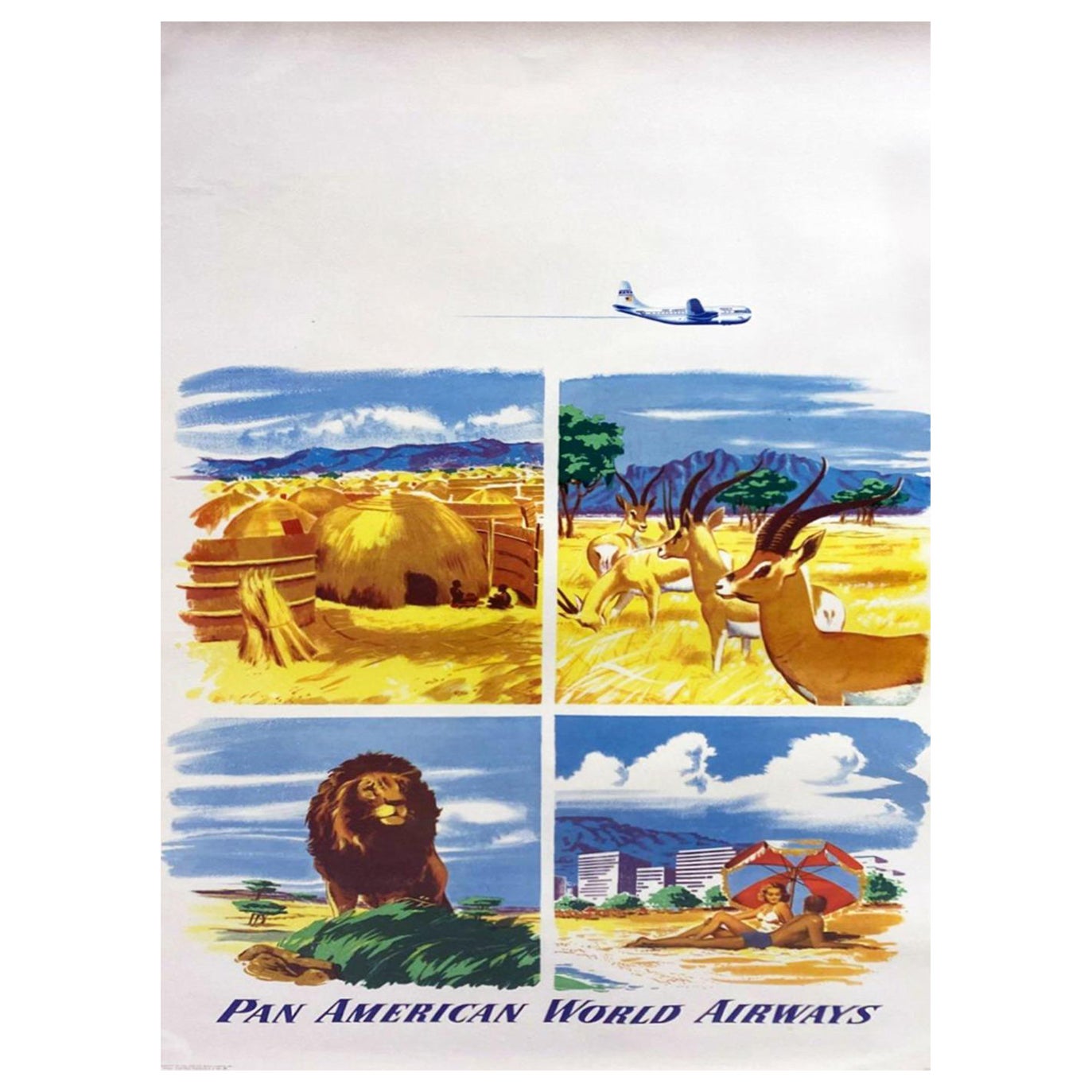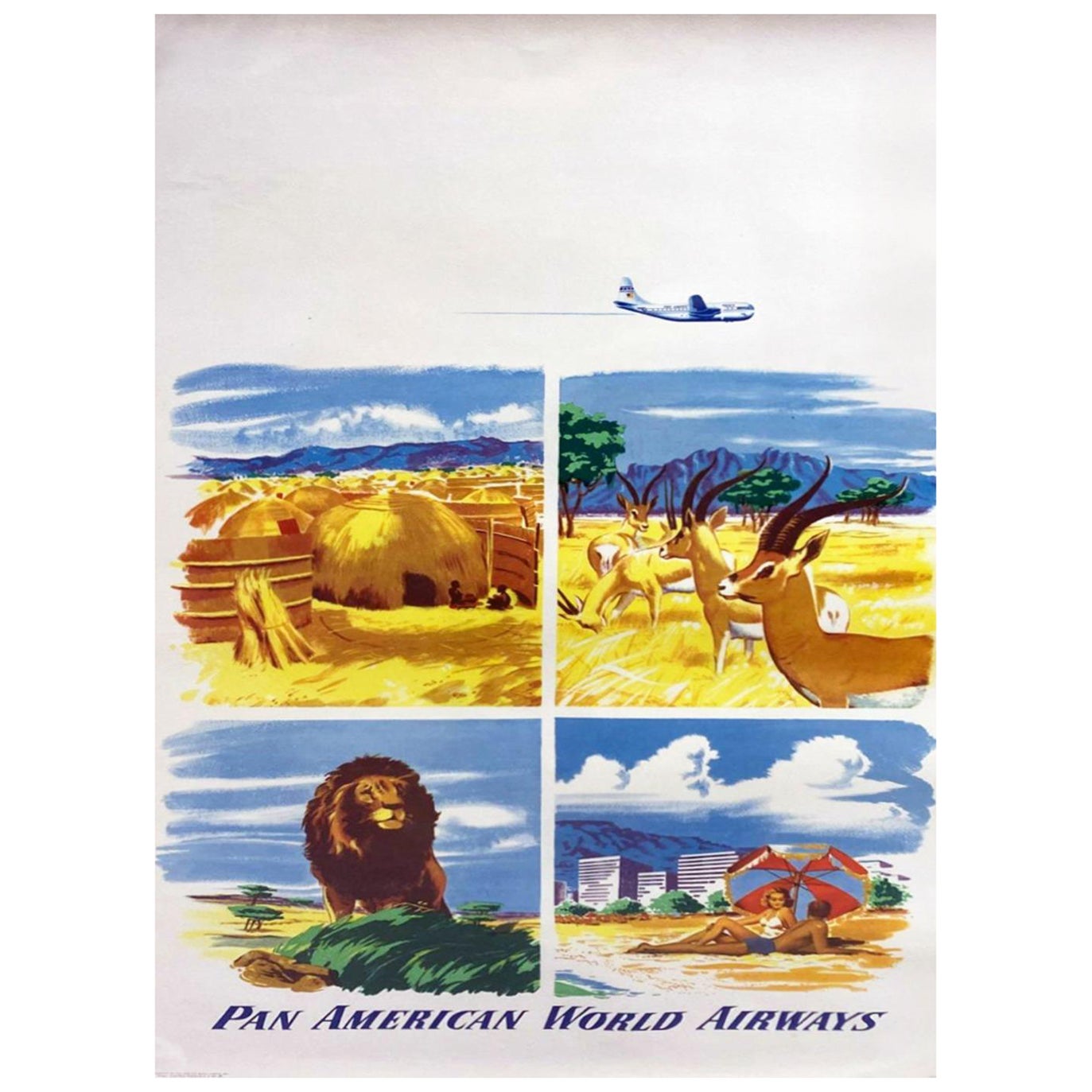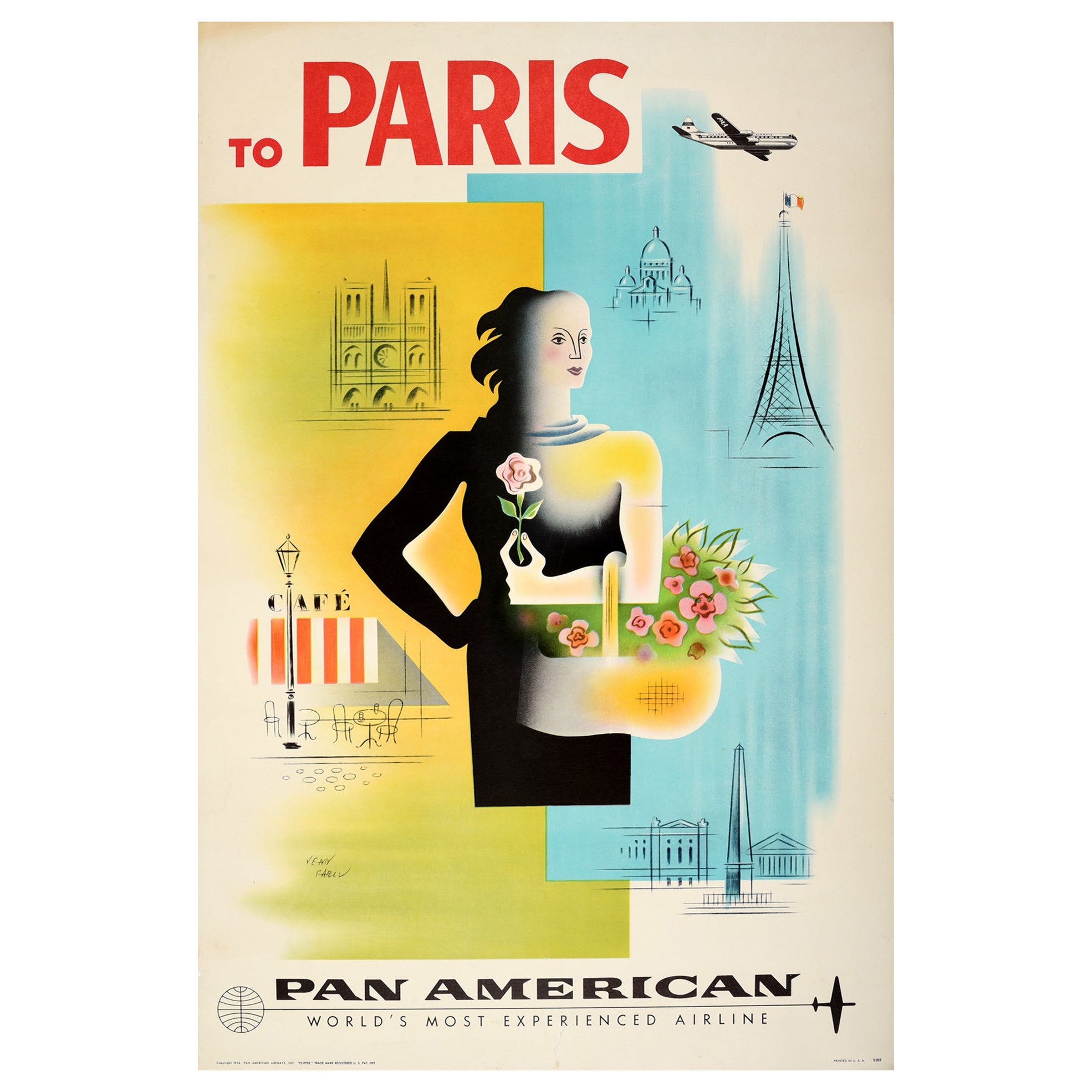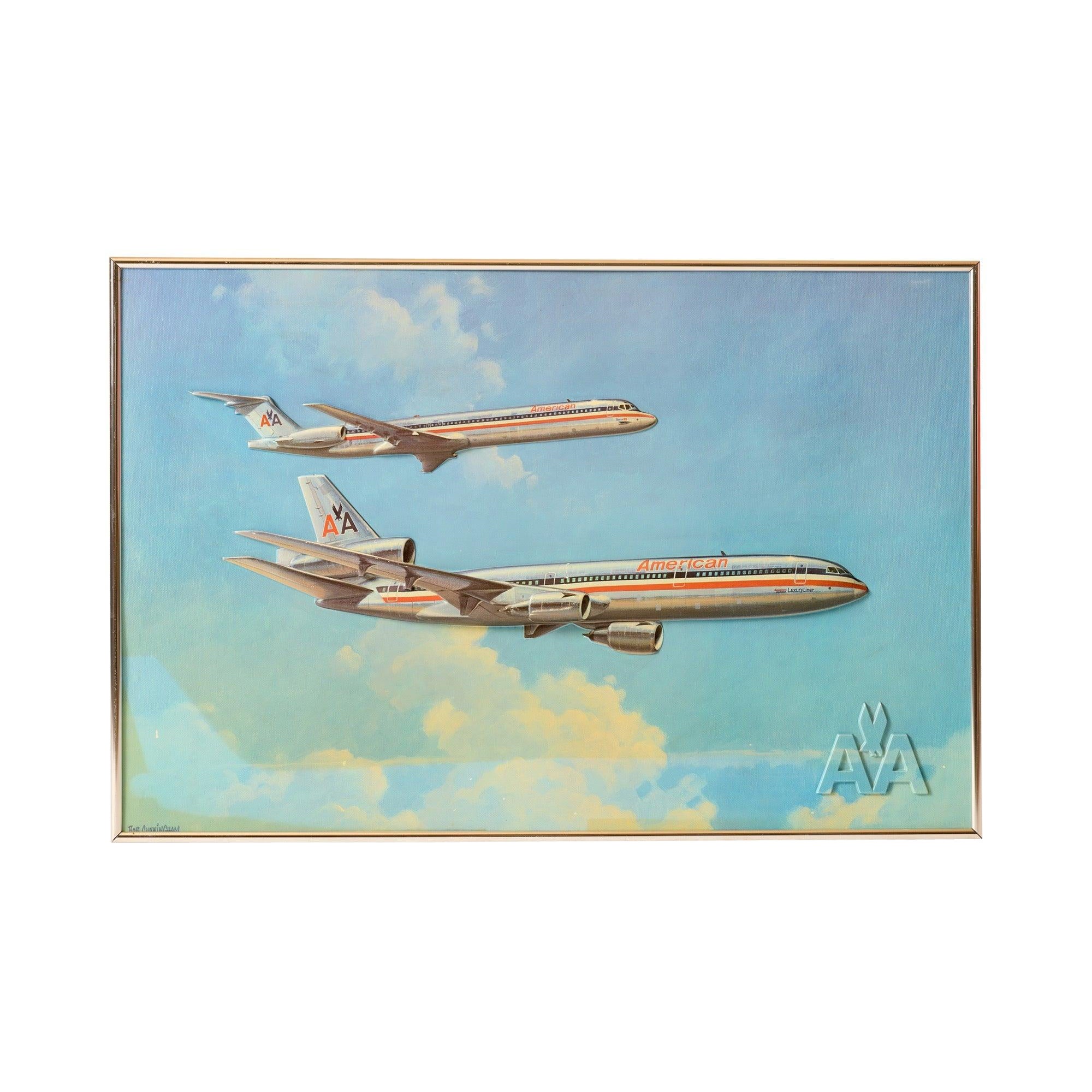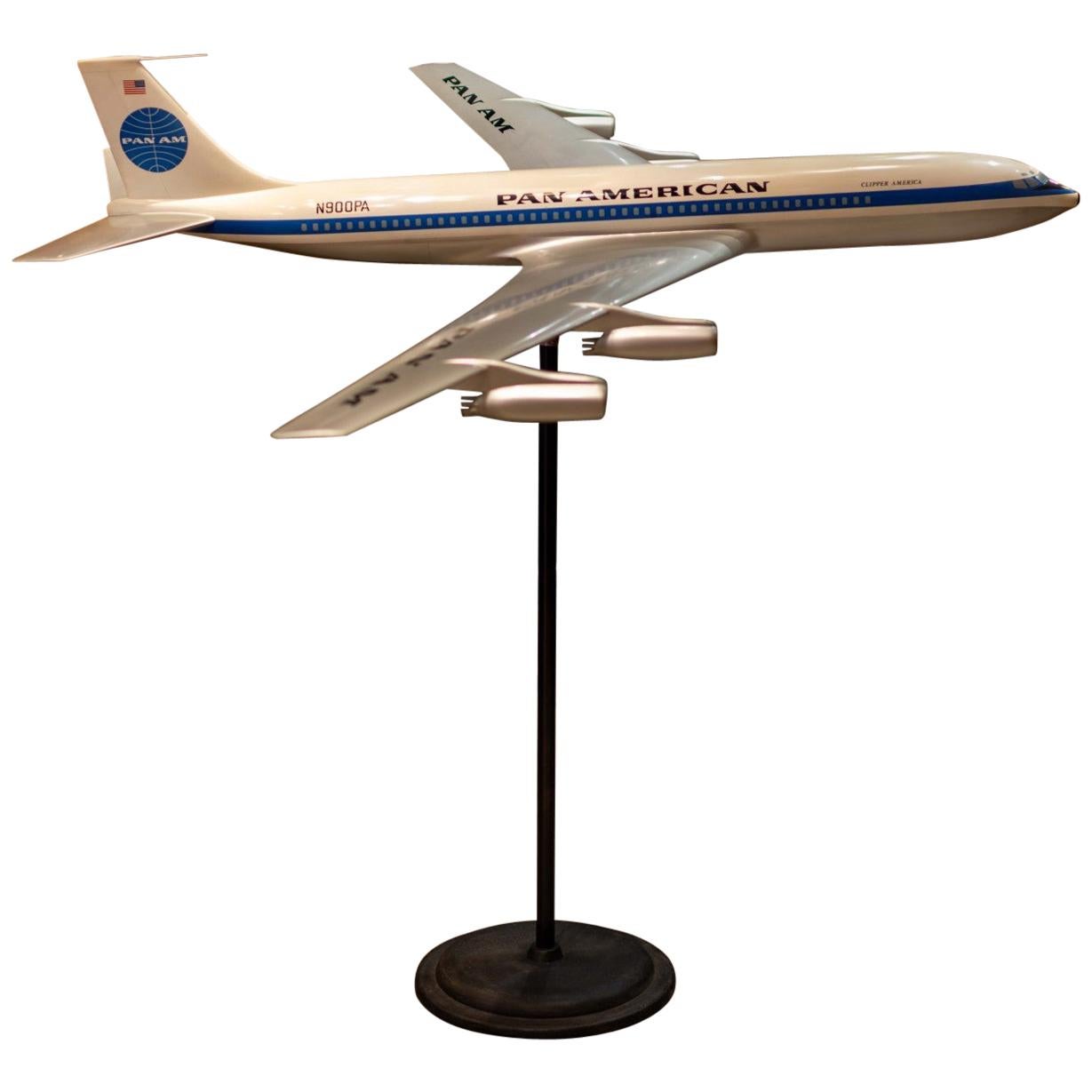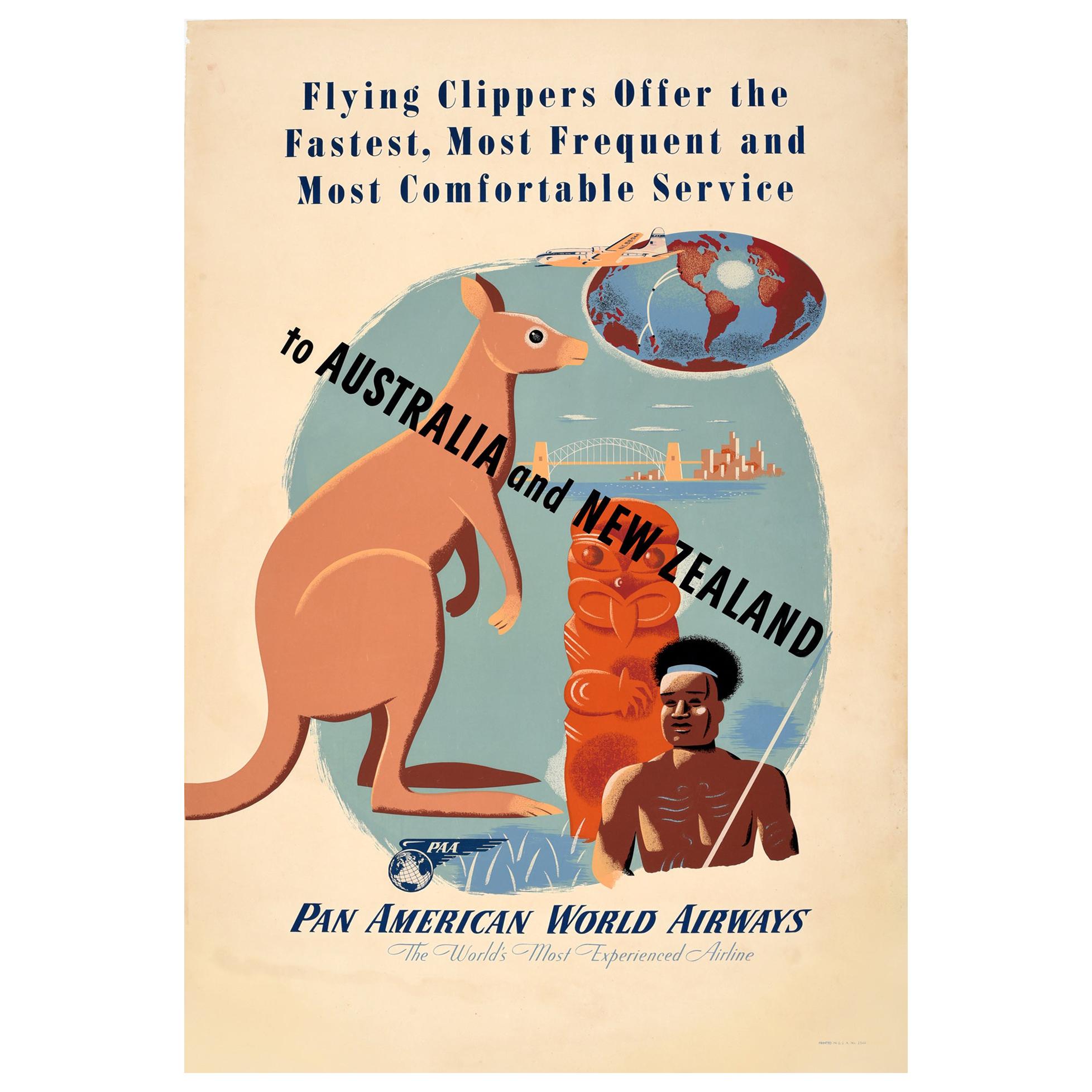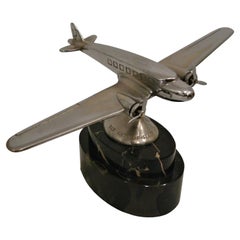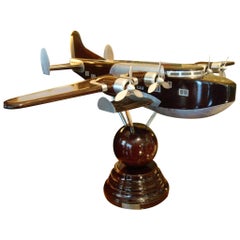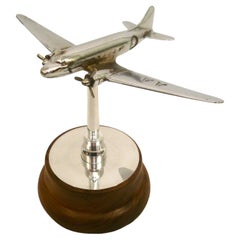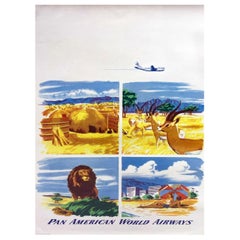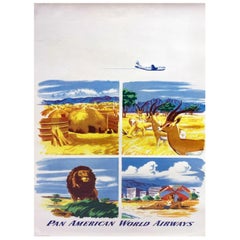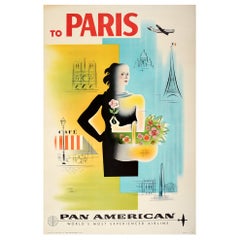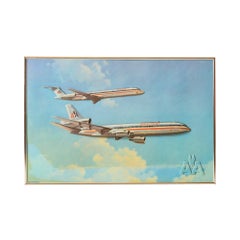Items Similar to Very Rare Pan American World Airways Porcelain / Enamel Aviation Sign
Want more images or videos?
Request additional images or videos from the seller
1 of 11
Very Rare Pan American World Airways Porcelain / Enamel Aviation Sign
$12,000
£9,231.20
€10,714.80
CA$16,922.86
A$18,956.46
CHF 9,956.62
MX$230,504.40
NOK 126,083.26
SEK 119,686.92
DKK 79,968.68
About the Item
Rare mid-20th century / vintage Pan American World Airways Porcelain / Enamel Sign. This sign is for Pan American World Airways. The sign’s colors are light and dark blue, and white. The text on the sign reads: PAA Pan American World Airways. The sign shows a flying globe with text. This Particular Logo was used between 1944 and 1955. Perfect Gift for any Aviation or Airplane Models Fan.
We have specialized in the sale of Art Deco and Art Nouveau and Vintage styles since 1995. If you have any questions we are at your disposal. Pushing the button that reads 'View All From Seller'. And you can see more objects to the style for sale. Why are there so many antiques in Argentina?
In the 1880 – 1940 there was a grate wave of immigration encouraged by the periods of war that were taking place. 1st World War took place between 1914 and 1918 2nd World War took place between 1939 and 1945 The immigrants options were New York or Buenos Aires. Tickets were cheap and in Buenos Aires they were welcomed with open arms, as it was a country where everything was still to be done. Argentina was the country of new opportunities, labour was needed and religious freedom was assured, in many cases the of the family travel first until they were settled and then the rest of the family members join them. In the immigrant museum “Ellis Island Immigrant Building” in New York you can se the promotional posters of the boats that would take them to a new life. Between the years 1895 and 1896, Argentina had the highest DGP (gross domestic product) per capita in the world according to the Maddison Historical Statistics index, this situation arose due to the large amount of food being exported to European countries, which were at war. The Argentinean ships left the port of Buenos Aires with food, but they returned with furniture, clothes and construction elements, (it´s common to see this the old buildings of the historic neighbourhood of San Telmo, the beams with the inscription “Made in England)”, as well as many markets that were built in Buenos Aires, such us the San Telmo Market, whose structure was brought by ship and afterwards assembled in 900 Defensa Street. With the great influence of European immigrants living in the country, the children of the upper classes travelled to study in France, resulting in the inauguration of “La Maison Argentinienne”, on 27th of June 1928, in the international city of Paris, which hosted many Argentinians that were studying in Frace. It´s the fourth house to be built after France, Canada and Belgium, being the first Spanish-speaking one. Still in place today (17 Bd Jourdan, 75014, Paris, France). Many of the children of these wealthy families who attended international art exhibitions, museums and art courses abroad, took a keen interest in the European style. This is why Buenos Aires was at the time referred as “The Paris of South America”. Between the years 1890 and 1920 more than a hundred Palaces were built on Alvear Avenue the most exclusive avenue in Buenos Aires. Today some of these palaces have been transformed into museums, hotels and embassies. In the year 1936, the Kavanagh building was inaugurated, it was the tallest reinforced concrete building in South America. During 1994 the American Society of Civil Engineers distinguished it as an “international engineering milestone”, and it´s now considered a World Heritage of Modern Architecture. At the time was common to hire foreign architects such as Le Corbusier, who visited Buenos Aires/Argentina in 1929 and in 1948 he drew up the blueprints for a house built in La Plata City (which was declared a World Heritage Site). In 1947, the Hungarian architect Marcelo Breuer designed “Parador Ariston” in the seaside city of Mar del Plata. After an Argentinean student at Harvard University convinced him to come to Argentina. He worked on an urban development project in the Casa Amarilla, area of La Boca. The Ukrainian architect, Vladimiro Acosta, arrives in Argentina in 1928 and worked as an architect until que moved to Brazil. Antonio Bonet, a Spanish architect who worked with Le Corbusier in Paris, arrives in Argentina in 1937, where he carried out several architectural works and in 1938 designs the well-known BFK chair. Andres Kálnay, of Hungarian origin, made around 120 architectural masterpieces, among which the former Munich brewery stands out, he even made the furniture’s design. The German architect, Walter Gropius, director of the Bauhaus, lived in Argentina, where he wrote articles for “Sur” magazine and founded in Buenos Aires, an architectural firm with Franz Möller, who was also an architect, where he built two houses. At the same time several famous designers decided to immigrate to Argentina, among them we can find the well-known French designer, Jean-Michel Frank, who arrived in the country in 1940 and also worked for the Rockefeller family. Special pieces were made, which were sold exclusively in the country, such as the well-known German company “WMF”, who sold their products by catalogue, which were chosen by the ladies of high society in the list of wedding gifts, as well as the pieces designed by Christofle. The Swiss sculptor Alberto Giacometti, made special pieces for Argentinean mansions. In 1904 the first Jansen branch outside Paris was established in Buenos Aires, as the Argentinean clientele demanded a large amount of furniture, from the end of the 19th century to the mid-20th century. In 1970, the brand Rigolleau Argentina made pieces authorised by Lalique. The brands Maple and Thompson also set up shop in the country. The French plastic artist, Marcel Duchamp moved to Argentina in 1918-1919. Glass signed Gallé, Charder, Leverre, Schneider, Muller and other French firms. They were bought in flower shops and were given to ladies with beautiful floral arrangements. Some furniture manufacturers travelled to international fairs and bough the patterns to produce the furniture in Argentina, such as the furniture firm Englander and Bonta, who bought the patterns in Italy. It is worth mentioning that in Argentina we have the largest community of Italians outside of Italy, as it is estimated that 70 percent of the inhabitants have at least one Italian descendant, followed by Spanish immigrants. The most Important furniture stores in Argentina: Comte is founded in 1934 (under the direct management of Jean Michel Frank in 1940). Nordiska (Swedish company established in 1934). Churba in 1960, a company that brought foreign designers to present their furniture in the country: Denmark: (Arne Jacobsen, Finn Juhl, Bender Madsen, Ejner Larsen, Poul Kjaerholm, Hans Wegner) Sweden: (Hans Agne Jakobsson, Gustavsberg) United States: (Herman Miller) Finland: (Lisa Johansson, Folke Arstrom, Tapio Wirkkala, Alvar Aalto, Timo Sarpaneva) Swedish Factory: (Orrefors) Italy: (Littala, Vico Magistretti, Emma Gismondi, Gae Aulenti, Angelo Mangiarotti, Elio Martinelli, Gianna Celada, Angelo Mangiarotti, Mario Bellini, Carlo Scarpa) Finland: (Olivia Toikka) Plata Lappas (Lappas Silver): a goldsmith shop founded in 1887 in Argentina by Alcibiades Lappas of Greek origin. In 2019, in Argentina took place “the Art Deco world congress” . Argentina currently has more than 100 Art Deco buildings and another 90 Art Nouveau buildings throughout the city of Buenos Aires. Argentina is a country that has not been involved in many wars, which is why it has been a refuge for works of art and antiques from different periods of time, unlike European countries. That is way many collectors, museums and antique dealers from all over the world visit it, you should not miss the opportunity to visit this great country.
- Creator:Pan American Airways (Maker)
- Dimensions:Height: 18.12 in (46 cm)Width: 24.02 in (61 cm)Depth: 0.2 in (5 mm)
- Style:Mid-Century Modern (In the Style Of)
- Materials and Techniques:Enamel,Metal
- Place of Origin:
- Period:
- Date of Manufacture:1944
- Condition:Wear consistent with age and use.
- Seller Location:Buenos Aires, AR
- Reference Number:1stDibs: LU2027330992812
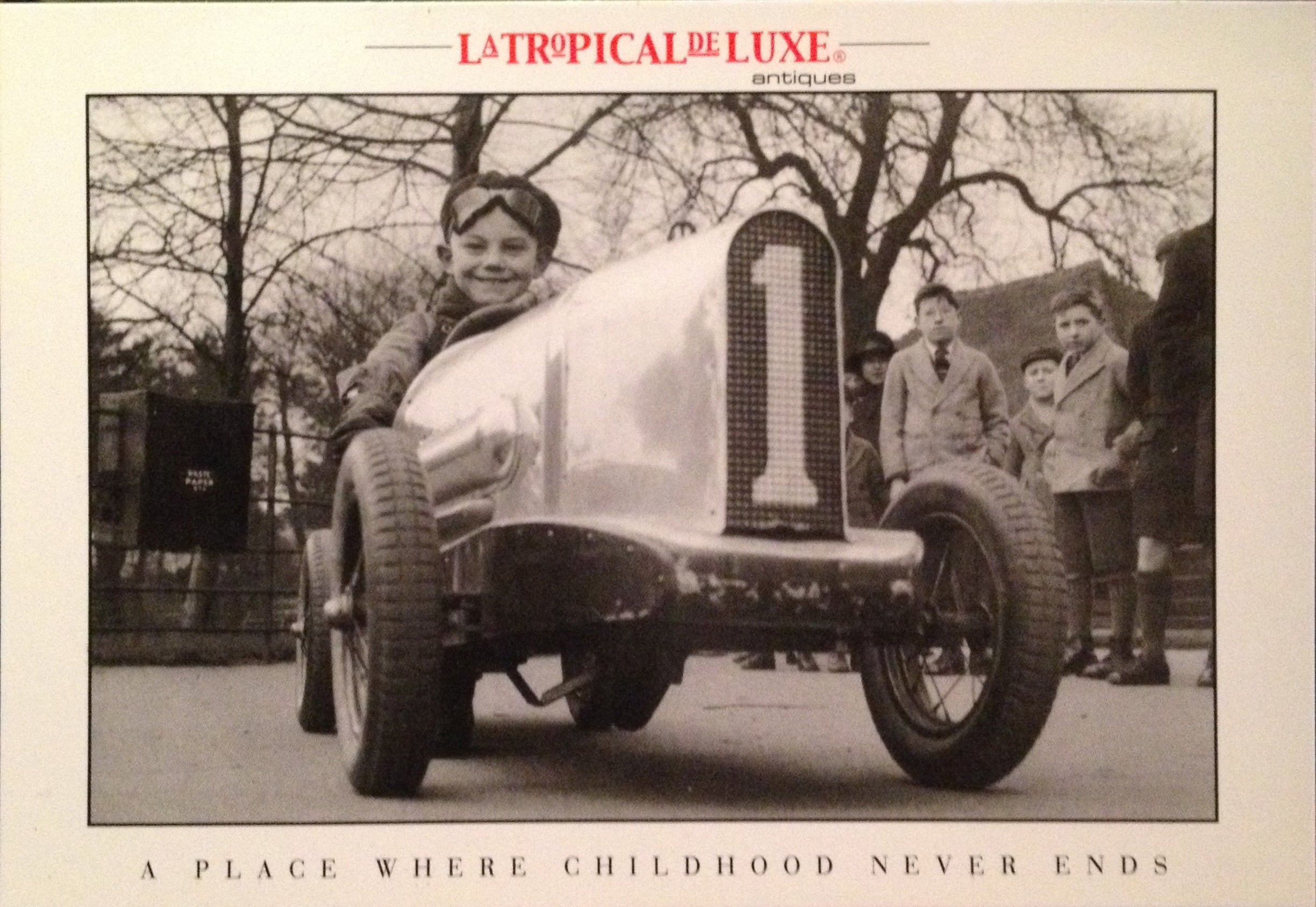
About the Seller
4.9
Vetted Professional Seller
Every seller passes strict standards for authenticity and reliability
Established in 2002
1stDibs seller since 2016
320 sales on 1stDibs
Typical response time: 1 hour
- ShippingRetrieving quote...Shipping from: Buenos Aires, Argentina
- Return Policy
Authenticity Guarantee
In the unlikely event there’s an issue with an item’s authenticity, contact us within 1 year for a full refund. DetailsMoney-Back Guarantee
If your item is not as described, is damaged in transit, or does not arrive, contact us within 7 days for a full refund. Details24-Hour Cancellation
You have a 24-hour grace period in which to reconsider your purchase, with no questions asked.Vetted Professional Sellers
Our world-class sellers must adhere to strict standards for service and quality, maintaining the integrity of our listings.Price-Match Guarantee
If you find that a seller listed the same item for a lower price elsewhere, we’ll match it.Trusted Global Delivery
Our best-in-class carrier network provides specialized shipping options worldwide, including custom delivery.More From This Seller
View AllPan American - Grace Airways Airplane Model Advertising Paperweight. c1930´s
By Pan American Airways
Located in Buenos Aires, Olivos
Pan American - Grace Airways Airplane Model Advertising Paperweight.
circa 1930´s.
Pan American-Grace Airways, also known as Panagra, and dubbed "The World's Friendliest Airline" w...
Category
Mid-20th Century American Mid-Century Modern Aviation Objects
Materials
Marble, Brass
Art Deco Pan-Am DC3 Wooden Airplane Desk Model, Midcentury
By Pan American Airways
Located in Buenos Aires, Olivos
Art Deco / midcentury large DC3 desk aviation model.
Pan-Am wooden airplane model.
It was in an office of the company in South America.
Very good restored conditions. Slight age wear.
History
Pan American Airways began the first transatlantic passenger service on this day in 1939. Pan American World Airways, as it was to be known, commonly known as Pan Am, was the principal United States international air carrier from the late 1920s until its collapse on December 4, 1991. Founded in 1927 as a scheduled air mail and passenger service operating between Key West, Florida, and Havana, Cuba, the airline became a major company credited with many innovations that shaped the international airline industry, including the widespread use of jet aircraft, jumbo jets, and computerized reservation systems.
The history of Pan American Airways is inextricably linked to the expansive vision and singular effort of one man – Juan Trippe. An avid flying enthusiast and pilot, Trippe, only 28 years old when he founded the airline, lined up wealthy investors and powerful government officials from his personal acquaintances in the high-society of the 1920s. However, Pan Am’s first flight was an inauspicious start to its epic saga.
In 1927, facing a Post Office deadline for the commencement of mail carriage, Pan Am had no working equipment for its sole airmail contract between Key West and Havana. Fortunately for Pan Am, a pilot with his Fairchild seaplane arrived at Key West and was willing to carry the mail to Cuba for the start up operation. It is fitting that Pan Am’s first flight would be over water, since the airline would Pioneer overseas routes throughout its history.
Pan Am’s fortunes took a turn for the better in the fall of 1927. Through the heavy lobbying efforts of Juan Trippe, Pan Am was selected by the United States government to be its “chosen instrument” for overseas operations. Pan Am would enjoy a near monopoly on international routes. Added to Pan Am’s Cuba route were lines serving Mexico, Central America, the Dominican Republic, Haiti and Puerto Rico. Most of these destinations were port cities, which could be reached only by landing on water. Therefore Pan Am made good use of its “flying boats,” the Sikorsky S-38 and S-40. Flights were eventually expanded to serve much of South America as well.
EnlargePan Am’s fleet of Clippers allowed the airline to conquer the Pacific in the mid-1930s. The flying boats would later be put to military use in WWII.
Just a few years later, Pan Am launched its effort to cross the world’s largest oceans. Survey flights across the Pacific were conducted with the Sikorsky S-42 in 1935, but passenger service required bigger and better aircraft. Accompanied by much fanfare, the Martin M-130 was introduced in 1936, followed by the Boeing 314...
Category
Mid-20th Century Unknown Mid-Century Modern Aviation Objects
Materials
Wood
Art Deco Boeing 314 Airplane Pan American 'Clipper', circa 1938
Located in Buenos Aires, Olivos
Art Deco Aviation Model Boeing 314 Airplane Pan-American 'Clipper', circa 1938
A superbly crafted rendering of the legendary transoceanic Boeing 314 Pan-Ame...
Category
Vintage 1930s American Art Deco Aviation Objects
Materials
Wood
Vintage American Airlines Dc-3 Old Chrome Desk Model Airplane
By American Airlines
Located in Buenos Aires, Olivos
Vintage American Airlines Dc-3 old Chrome desk model airplane.
Introduced in 1936, the Douglas DC-3 was the first airliner able to undertake ...
Category
Mid-20th Century American Mid-Century Modern Aviation Objects
Materials
Metal
Mid Century Aviation Vintage Desk Airplane Over Globe Model, 1940s
Located in Buenos Aires, Olivos
Aviation Model. Vintage aluminium display airplane model. The model is a mixture of Art Deco and midcentury design. It is mounted over a silvered ball...
Category
Mid-20th Century American Mid-Century Modern Aviation Objects
Materials
Metal
Marchal Ferrari 375 Plus Accessory Counter Advertising Sign, ca 1950’s
Located in Buenos Aires, Olivos
Marchal Ferrari accessory counter advertising sign, ca 1950’s, color litho celluloid over card backing.
The sign was produced when Marchal (electrical car parts including head lamps) provided Ferrari cars of accessory. Very Rare item, perfect for any car mascot, hood ornemant or automobilia collector.
The Artist was H. Camy, a French poster designer. He did works for Marchal and Citroen among others.
FERRARI 375 PLUS
After winning the Auto Sport World Championships in 1953, Enzo Ferrari decided to build a small series of spiders that would spearhead the Scuderia’s latest assault on the World title. These cars were to be known as the 375 PLUS for which Aurelio Lampredi developed a truly powerful V12 engine of nearly five litres while Pinin Farina took care of the coachwork. The results lived up to all expectations and the car also triumphed at Agadir, Silverstone and Le Mans. However, its most significant victory of all was Umberto Maglioli’s at the Carrera Panamericana...
Category
Vintage 1950s French Mid-Century Modern Posters
Materials
Other
You May Also Like
1951 Pan American World Airways Original Vintage Poster
Located in Winchester, GB
Wonderful & rare poster created in 1951 for Pan American World Airways, widely known as Pan Am. Depicting four gorgeous scenes featuring wildlife on...
Category
Vintage 1950s American Mid-Century Modern Posters
Materials
Linen, Paper
1951 Pan American World Airways Original Vintage Poster
Located in Winchester, GB
Wonderful & rare poster created in 1951 for Pan American World Airways, widely known as Pan Am. Depicting four gorgeous scenes featuring wildlife on...
Category
Vintage 1950s American Posters
Materials
Linen, Paper
Original Vintage Pan American Poster To Paris France Pan Am Airline Travel Art
By Jean Carlu
Located in London, GB
Original vintage travel poster - To Paris Pan American World's Most Experienced Airline - featuring a colourful design by Jean Carlu (1900-1997) depicting a lady holding a basket of flowers and a rose in her hand with illustrations of seating outside a cafe and famous historical monuments in the background including the Eiffel Tower flying a French flag at the top, the Notre Dame cathedral, Cleopatra...
Category
Vintage 1950s American Posters
Materials
Paper
Vintage American Airlines Artwork by Bob Cunningham for American Airlines, 1970s
Located in Sagaponack, NY
American Airlines Boeing 727 and DC 9 Plastic mylar 3D art. Bob Cunningham signed
Category
Vintage 1970s American Decorative Art
Materials
Plastic
Pan Am Boeing 707 Model Aircraft, circa 1958
Located in London, GB
An exceptional large scale vintage fiberglass and resin composite promotional model of a Boeing 707 in Pan Am’s iconic livery on original steel and cast iro...
Category
Vintage 1950s American Aviation Objects
Materials
Steel, Iron
Original Vintage Pan Am Travel Poster To Australia And New Zealand Pan American
Located in London, GB
Original vintage Pan Am travel poster - to Australia and New Zealand PAA Pan American World Airways The World's Most Experienced Airline ...
Category
Vintage 1940s American Posters
Materials
Paper
More Ways To Browse
Italian Old World
German Exhibition Poster
70s Vintage Logo
Porcelain Street Sign
Spanish Fan
Vintage Model Airplanes
Aviation Chair
Airplane Model Art Deco
Vintage Franz Porcelain
Airplane Fan
New York Film Festival Poster
Surf Movie Poster
The Empire Strikes Back Movie Poster
Vintage Scooter Poster
Vintage Yellow Submarine Poster
Yellow Submarine Poster
Agnes Varda
Alice In Wonderland Poster
